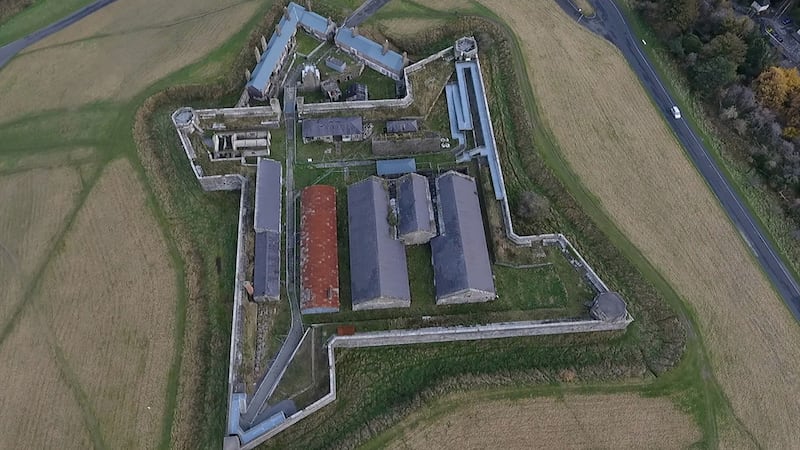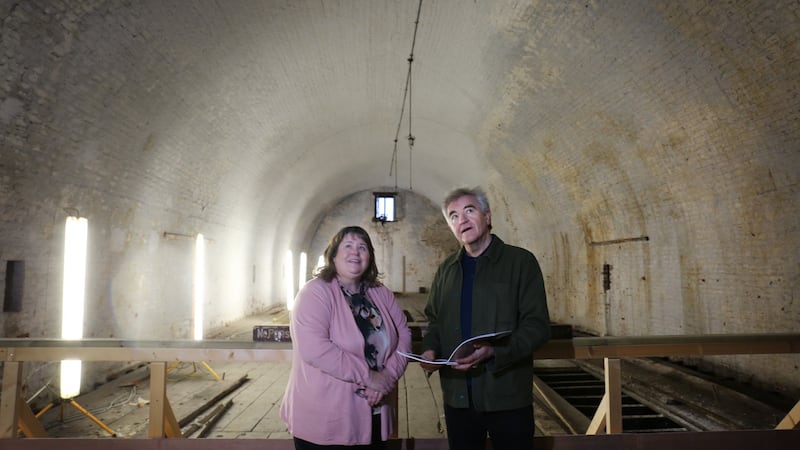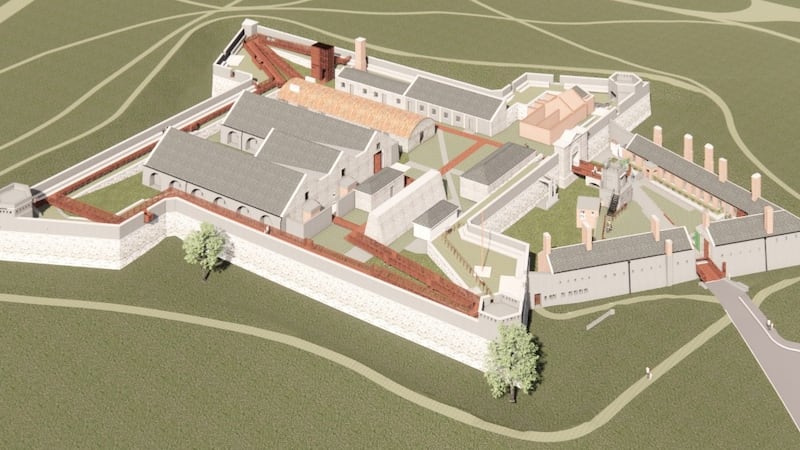On a hill top in the south of Dublin's Phoenix Park a 300-year-old abandoned "town" sits almost unnoticed.
The Magazine Fort, one of several military sites in and around the park, was built in the 1730s to store gunpowder – some years after the original gunpowder tower in Dublin Castle went on fire, sparking fears that an explosion could take out half the city.
However, the fort rapidly became a thriving community, with soldiers, officers and their families all living and working in the 25 buildings within its walls.
0 of 5

The fort remained in military use right up to the 1980s, but has since become increasingly derelict. The Office of Public Works (OPW) has now devised plans to give it a new lease of life through a major conservation programme and the installation of new visitor facilities. A planning application has been submitted to Dublin City Council for the project, which is expected to take up to five years to complete. However, the first steps towards the fort's restoration will begin in the new year, when the OPW issues a tender for the stabilisation works on the historic walls.
Chief park superintendent Margaret Gormley says the OPW has long had an ambition to restore and open the fort to the public.
“People maybe don’t realise when they are walking around the outside, but it’s a huge complex here. We have two magazines, we have a bakery, laundry, we have all the carriage houses, the officers’ quarters ... ” The “magazines” themselves – the three buildings used for storing the gunpowder – are “unique in Ireland” she says.

“They have lovely vaulted ceilings, and beautiful oak floors 8ft off the ground to allow the air to circulate underneath to keep the powder dry. The lighting is little recesses in the wall where the candles would have been – you couldn’t have flames close to the powder – and there are no nails in the floor, because the soldiers would have had nails in their boots and you couldn’t risk a spark.”
Health and safety
Despite the in-built 18th century safeguards, archeological finds indicate a somewhat lax attitude to health and safety, says Gormley. “When we took up some of the boards to see what was underneath, we found clay pipes. Having a smoke was possibly the most dangerous thing you could do here.”
The fort remained occupied by the military until 1988, when it was transferred over to the OPW, but despite various plans for its use it has remained vacant.
“The government bunker was proposed for the fort. There were proposals to store furniture here – it would have been a very luxurious furniture store – there were all sorts of proposals, but I think the Phoenix Park is crying out to have a major tourist attraction so close to Dublin city,” she says.
"It's on very high ground so there are beautiful views across the river Liffey over to the War Memorial Gardens and further afield to the Royal Hospital in Kilmainham. So it's a lovely cultural link to different institutions and parks and gardens close by, but also a military historical trail as well.

The final budget for the work hasn’t been established but it is likely to be completed in phases of “a couple of million” each, says Gormley. “It is quite a financial undertaking, and I don’t think the resources were available in the past to do that, but the State now is very keen to open this building, for the interpretation of the fortification itself and to make new experiences for people of all ages.”
The redevelopment of the fort is being led by architect Denis Byrne.
“Visitors may be aware there is a military presence in the park, and the high chimneys give it an air of mystery, but it is a magnificent collection of buildings, really largely unknown to most Dubliners,” says Byrne. “ Our involvement is really in encouraging the visitor to be able to explore this series of buildings.”
Byrne wants to bring the fort alive as the small town or village it once was.
“This was a thriving community of soldiers, but not only soldiers – of wives and children, like a small town in fact. The visitor will get a sense of this very particular community in this particular place with a very unusual function. I think there is an inherent fascination with this type of building. We hope to frame it in a way that is letting it speak for itself, rather than adding something that is not original or not authentic.”
Over the moat
There will, however, be elements the original community wouldn’t have had, such as a cafe, but these will be kept to the periphery to allow people to be immersed in the atmosphere of the fort.
“Visitors will arrive through the old gates, over a bridge and moat into the outer courtyard. They will be brought around the ramparts – there will be lifts and stairs and ramps so that it is accessible to all. From there the walkway descends from the ramparts to visit the various buildings, gently guiding the visitors through the fort.

“The fort contains very specific buildings for very specific jobs. The gunpowder store is a must-see; soldiers’ quarters to see how people lived. There are stables, various types of stores, a blacksmith, a bakery – all the paraphernalia you would expect in a self-sufficient small town.”
One of the gunpowder stores will be used as a museum, but the other two will house a different sort of exhibition space, says Byrne.
“It’s a sound and light experience that doesn’t rely on artefacts but involves projection and sound to bring stories to life. The model is the L’Atelier des Lumières in Paris. It’s a light touch in terms of the building themselves but provides a powerful experience for the visitor.”
See plans for the fort at planning.agileapplications.ie/dublincity/application-details/146914















